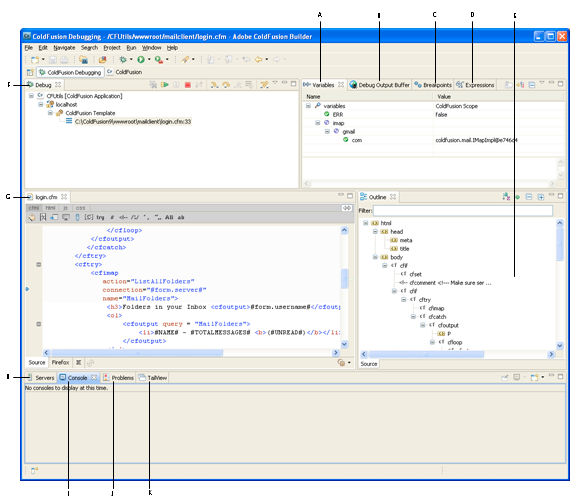I find myself often returning to 1995. It was a big year for the world and a big year for the web. On top of advancements in browsers and online experiences, it was a crucial year for new programming languages. 1995 was the year that Java and PHP were developed. Ruby saw its first public release. JavaScript was built in 10 days sometime in the middle of the year, and released as part of Netscape before the year was over. And somewhere in between, 1995 was also the year of ColdFusion.
Like so many other useful web utilities, ColdFusion began with a practical need. In the early 1990’s, brothers Jeremy and J.J. Allaire created a software company in Minnesota, Allaire Corporation. Jeremy began to turn his attention to building web applications for clients. He figured he would use an existing programming language that played nice with the web. Perl came to mind, and it was a favorite among early web developers looking for more advanced data and server needs.

But J.J. had a different idea. He began piecing together different parts of server and database technology with a new programming language built for HTML. He wanted something that felt more directly compatible with the web, and was super easy to use. Pretty quickly, J.J had developed the first version of the ColdFusion application development platform.
When describing his original intent for ColdFusion semantics, and it’s overall approach, Allaire says that he “built a language that had as its at its heart expressiveness.” When ColdFusion began, it had basically two things. The first was database connectivity baked directly baked in that was designed for use with Windows NT and 95 servers. The second was a markup language known as CFML, which let developers do fairly advanced data transformations and query in a syntax that largely resembled HTML.
ColdFusion, unlike something like Perl or Ruby, was created specifically for building websites. Without the need for tradeoffs that come with a more broadly applicable language, of the choices about how the platform, and its underlying programming language, worked were grounded in how the web worked.
The Allaire brothers felt that building ColdFusion sites should feel just like building HTML sites. They wanted to lower the bar for entry for incoming users. CFML used tags that looked and felt like regular HTML. But these tags could do far more than HTML could out of the box, pulling data from the database and dynamically updating it. This was a deliberate choice. The Allaire brothers felt that, since ColdFusion was built specifically for the web, it should feel like building any other website. It lowered the bar to entry for incoming users.
Fairly quickly, the Allaire brothers were able to continue adding features that elevated ColdFusion from a programming language to a complete website development environment. And rather than depend on a large community of third party solutions, ColdFusion had a number of tools and utilities useful for web development built into its standard library. In the first few versions, they added email extensions, built-in discussion boards, and file and upload management. ColdFusion 4 and 4.5, released in 1998 and 1999 respectively, continued that trend with e-commerce and web application capabilities through forms.

Behind the scenes, the Allaire Corporation evolved even more rapidly than the software platform they had created. In early 1999, Allaire went through its IPO in the midst of a dot-com downturn, which proved successful despite a hostile market. Then, in 2001, Allaire was acquired by Macromedia, and ColdFusion was folded into the Macromedia software suite which included web adjacent tools like Flash and Dreamweaver. Several years later, when Adobe eventually acquired its rival Macromedia, Allaire was brought in there. And each time, ColdFusion was along for the ride.
After the Macromedia acquisition, ColdFusion was rewritten in Java, a language much closer to Macromedia’s core competency. And it added support for writing Flash based applications. But despite some of its changes during the transition, ColdFusion stayed close to its core philosophy of building a tool for building websites that looked and felt like a website itself.
As time went on, most of the original Allaire employees who worked on ColdFusion began to find other places to work. J.J. Allaire left shortly after the acquisition, started a new company, and eventually wokred at Microsoft for some time. Jeremy Allaire served as the CTO of Macromedia for some time, and later operated as the CEO of Brightcove. Other members of the team went on to become part of other important tech companies like Vimmemo, Hubspot and Techstars.
ColdFusion, though it has waned in popularity, continues to have new releases every several years. It’s got a set of tools and software that work alongside it. Thirty years on, however, ColdFusion no longer has the same impact it once had.


Leave a Reply